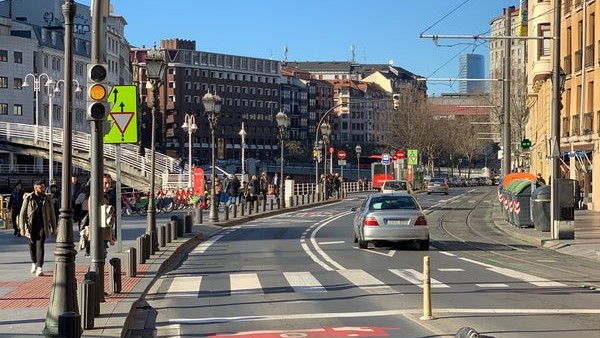In an effort to address environmental challenges and improve the quality of life of its citizens, Oslo implemented bold measures to reduce dependence on motor vehicles. With the goal of becoming a model sustainable city, policies were promoted that encouraged the use of bicycles as a primary mode of transportation, with a transport ban we will see now.
This initiative not only sought to reduce road congestion and pollutant emissions, but also to promote an active and healthy lifestyle for the city’s inhabitants. With the support of the community and the commitment of local authorities, Oslo moved towards a greener and more livable urban future.
Oslo, Norway’s most populous capital city, took bold steps towards a more sustainable and healthy future by embarking on an ambitious project: to become the first city in the world to completely dispense with motor vehicles due to high levels of carbon dioxide emissions and embrace the power of bicycles as its main mode of transportation.
In addition to addressing urban congestion and polluting emissions, which contributed to devastating climate change, this pioneering initiative sought to transform the way citizens interacted with their urban environment. By encouraging the use of bicycles as the primary means of transportation, it promoted an active lifestyle that not only benefited physical, but also mental and emotional health.
This city, ranked among the 25 cities with the highest quality of life in the world, stood out for its thriving and balanced urban environment. Its privileged position was supported by a variety of key indicators, including an abundance of public spaces that fostered community interaction and accessibility via aerial routes.
Moreover, the significant increase in cycling reflected not only a commitment to health and the environment, but also the efficiency and convenience offered by this mode of transport in a well-planned city. This was coupled with a high-quality transportation infrastructure characterized by reliability and accessibility.
Although it was a pioneer in the effective elimination of motor vehicles, it is important to note that it was not the first city to implement such a project. Madrid, was currently immersed in an ambitious plan that aimed to completely eliminate automobiles by 2020.
The innovative project in question covered a significantly larger area than the Oslo plan, as Madrid is a much larger city than Norway’s capital, covering more than 200 hectares of urban space. The Madrid initiative sought to revitalize the city’s historic center, in addition to its outstanding contribution to the environment.
The project to replace cars with bicycles had a significant impact on the lives of the 350,000 car owners residing in the city. In 2015, this change was expected to be implemented by 2019, when the transition process would be completed and the car ban would go into effect.
In the meantime, the government invested in the construction of more than 56 kilometers of exclusive bicycle lanes, a pioneering initiative in the field of public transportation. This investment not only promoted a more sustainable and healthy mode of transport, but also positioned Oslo as a unique city and a role model in terms of urban sustainability.
The question of whether it would be possible to do the same here in America remains to be seen. In any case, there are several states such as Texas that have implemented some bans on the most polluting cars, even more ambitious and restrictive than in the rest of the country.
However, we cannot ignore the fact that zero-emission engines do not involve polluting emissions, so banning their use just when we are trying to encourage them would not make any sense. But what if we look for a halfway solution? In Europe (specifically, in the European Union), large cities have a zero-emission zone where only electric, hydrogen or hybrid vehicles can enter, mainly.
Tags: Motor Vehicles, Oslo, Transportation



Recent Posts
Chartered Speed expands its electric mobility footprint in Arunachal Pradesh
PSA International joins Global Centre For Maritime Decarbonisation as a strategic partner
MPA and NYK Group Advance Collaborative Efforts on Maritime Autonomous Surface Ship Trials
BIMCO drafts new clause to support biofuel use in time charters
Global Maritime experts attended India@Nor-Shipping – Maritime Partnership for a shared & sustainable future
India-Norway Dialogue Anchors on Sustainable Maritime Development
Sea cruise ships can now connect to shore power in Amsterdam
Corvus Energy partners with HD Hyundai Mipo for AiP on new green product tanker design.